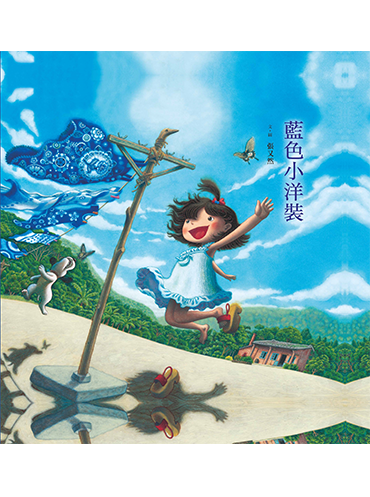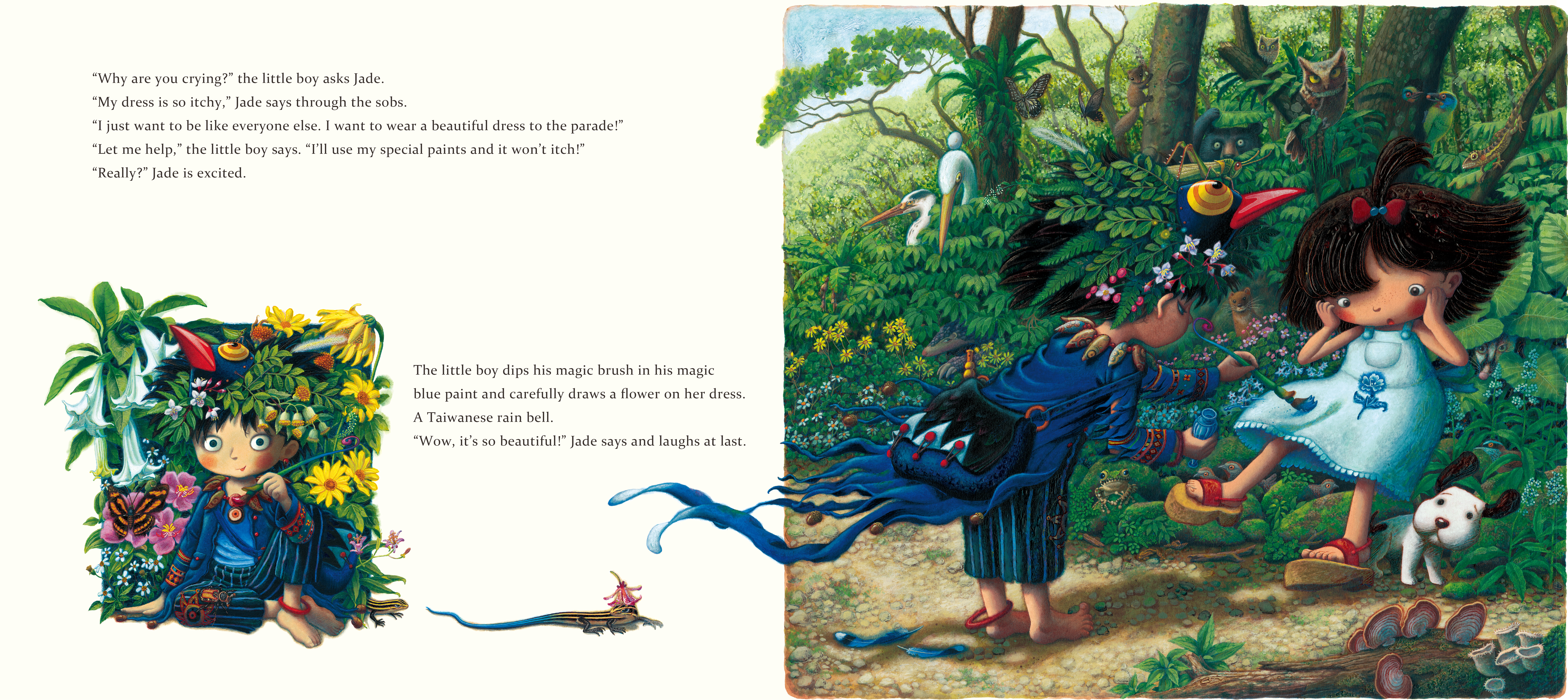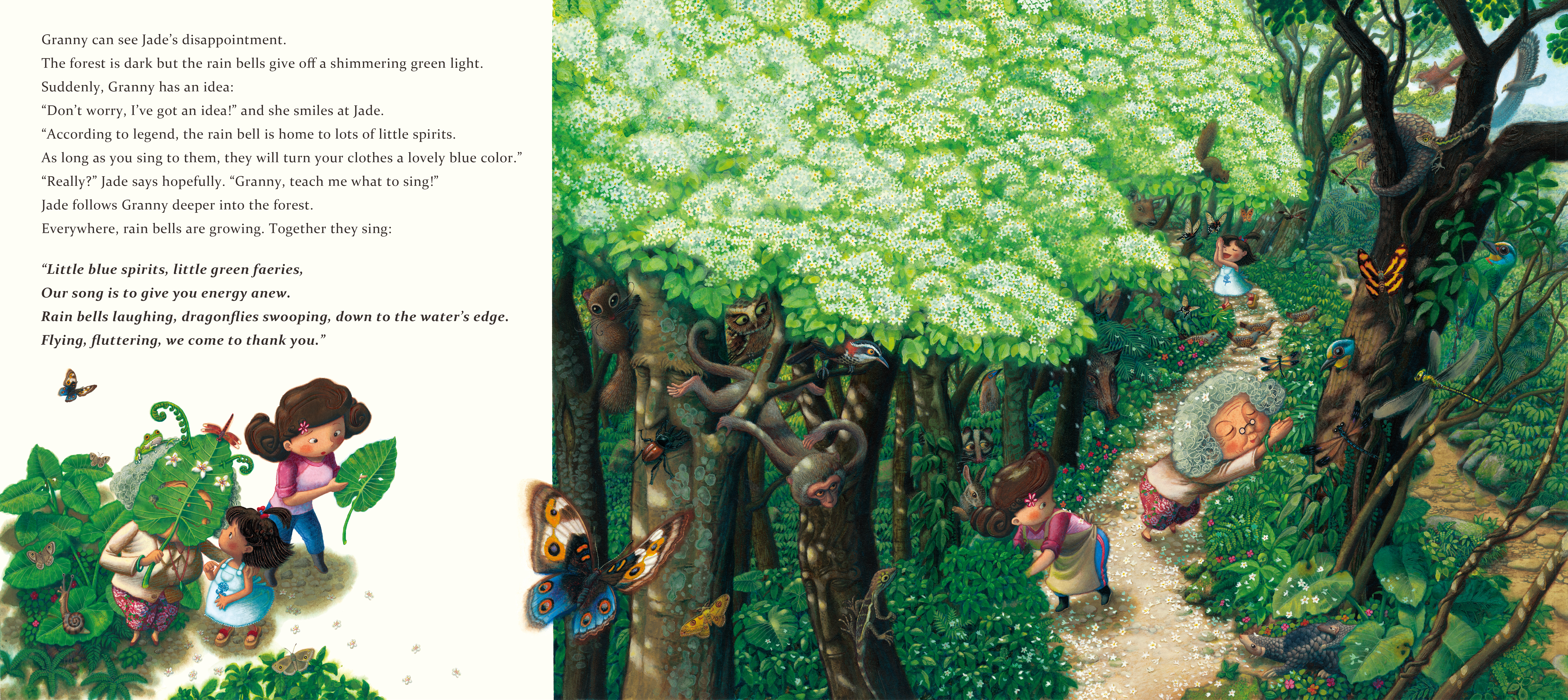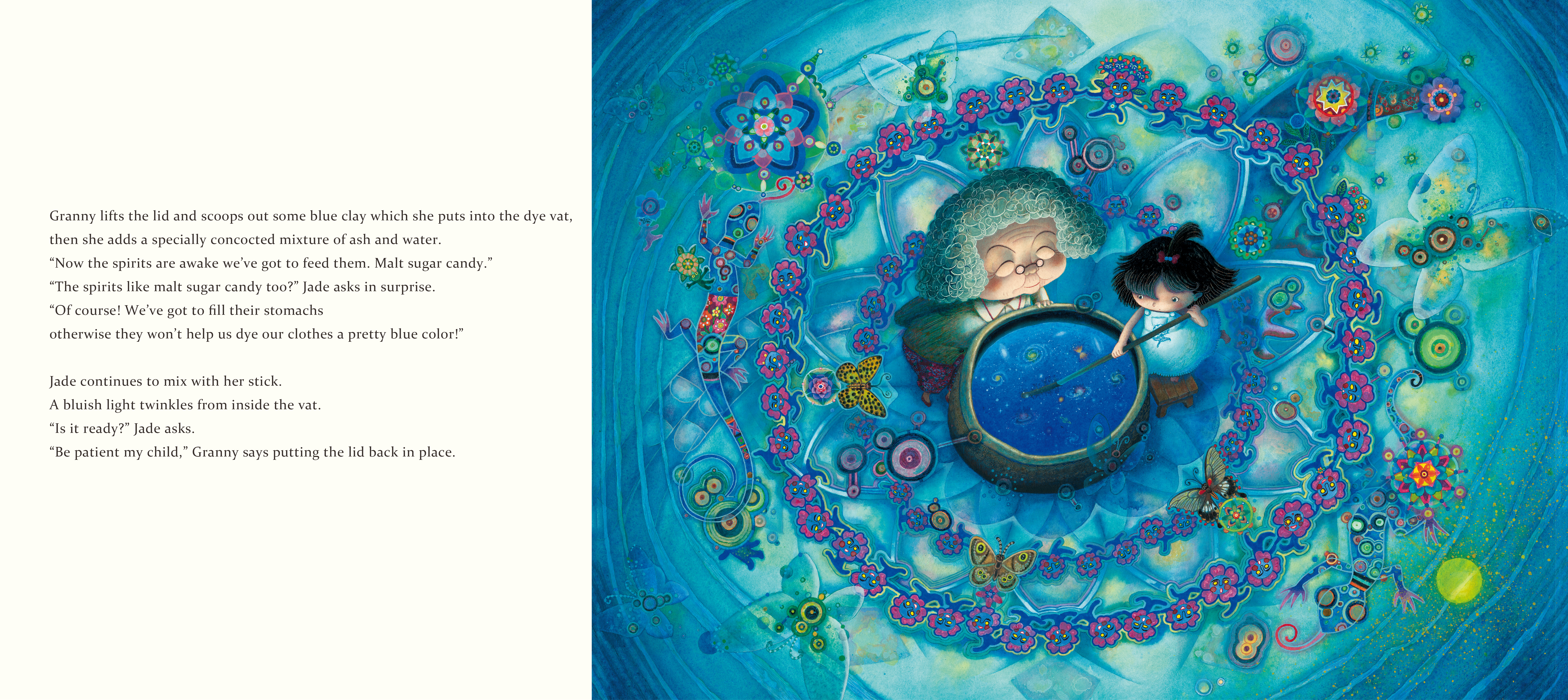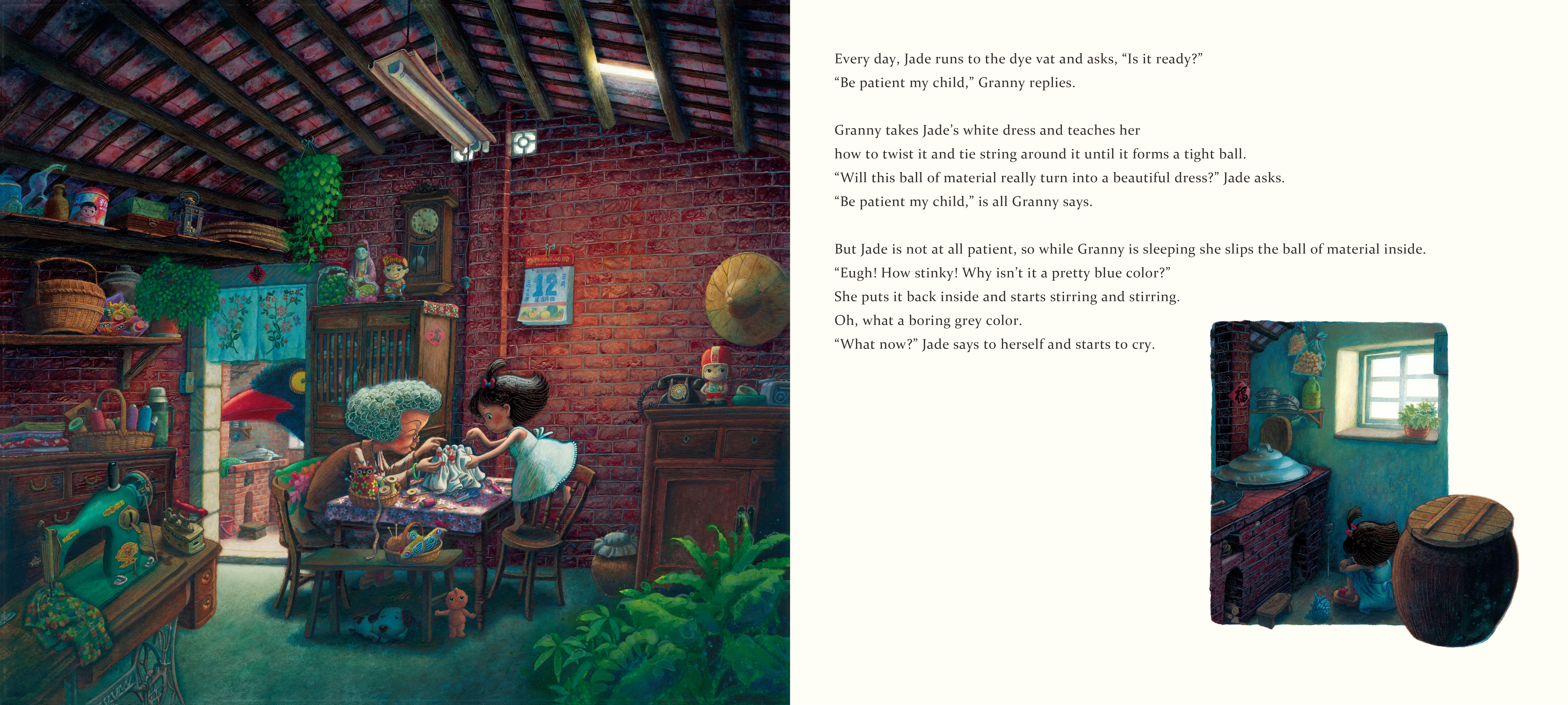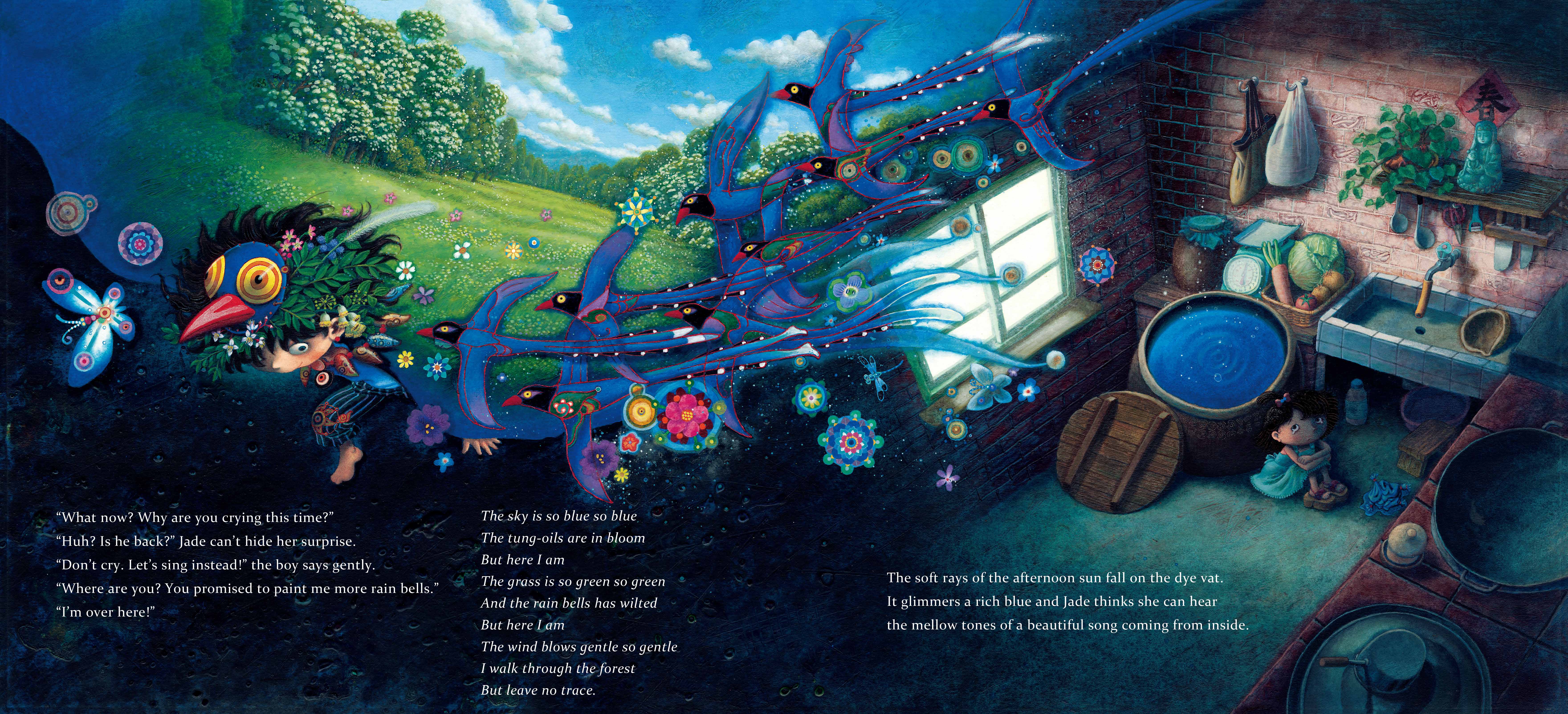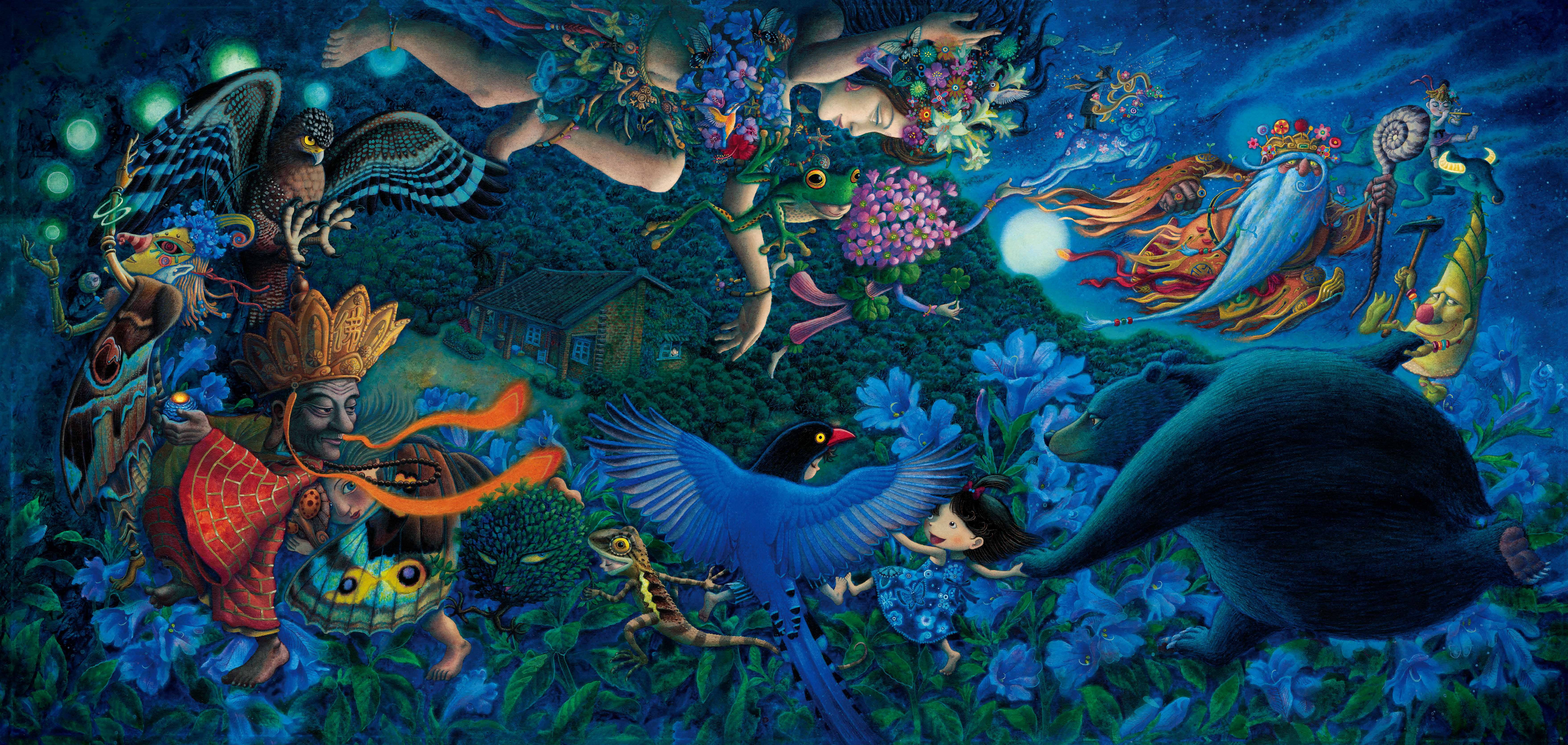A young reader of My Little Blue Dress might never know that the dyeing of Jade’s dress into a brilliant blue is an ancient art of the people of the Sansia mountainous region, or that the green forests and clear rivers of the book imitate the real environment of that area, yet it’s all true. This tale of self-discovery, care, and support blends humanity, nature, and history on a level almost unseen in children’s literature.
The village carnival and parade are just around the corner, and all the kids are talking about what they’re going to wear. Only Jade seems doomed to wear the same old, white dress she wears every day. None of the kids understand why she can’t wear new clothes, or why she sometimes itches so much she cries, so Jade spends most of her time alone. Embarrassed by the thought of looking shabby at the carnival, she runs away to the forest to cry; yet there she is visited by a young sprite dressed in brilliant clothing, who says he knows of a flower that can make her dress the most beautiful blue she’s ever seen. Inspired, Jade and her mother search everywhere for someone who knows the secret of this flower, and can give Jade the gift of color for the carnival.
This tender story of one girl’s courageous battle with autoimmune disease and her elders’ attempts to support her is also an authentic story of indigo. Set in an environment created through meticulous first-person research in the Sansia region of Taiwan, My Little Blue Dress describes places, people, and a dyeing tradition that have been around for centuries, immersing the reader in living history.
